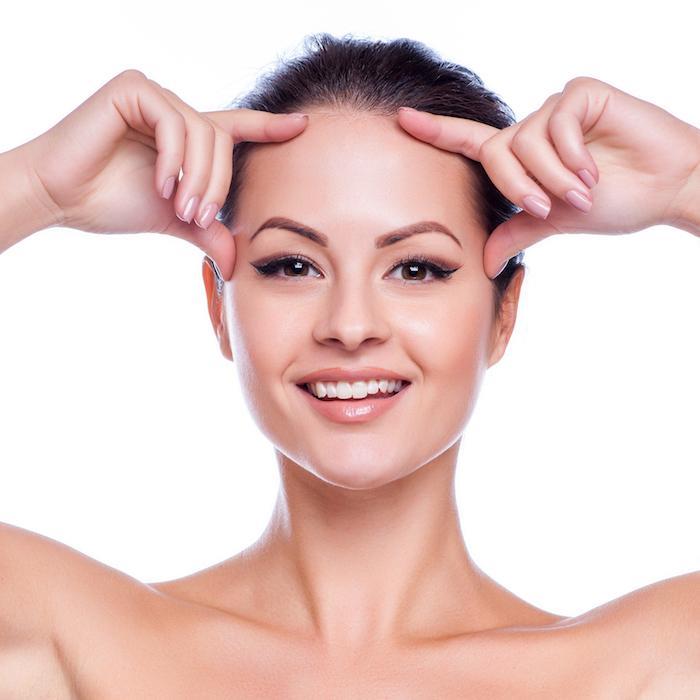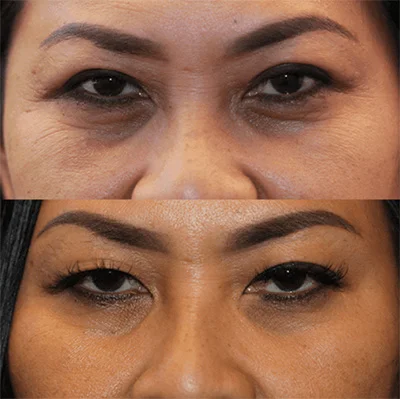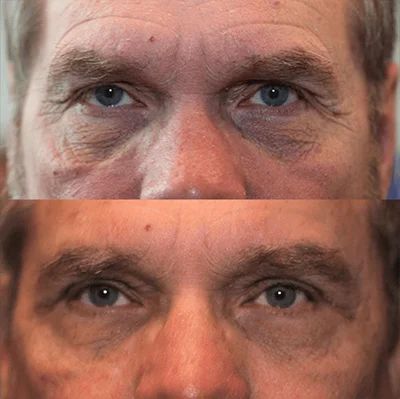
Forehead wrinkles and the “11” (glabellar) lines between your eyebrows are two of the earliest and most visible signs of aging. Fortunately, you can choose neuromodulators to address these issues and give your face a more relaxed and younger look.
At Arizona Ocular & Facial Plastic Surgery, Dr. Dustin Heringer and his staff use three different neuromodulators to address the visible signs of aging: Botox® Cosmetic, Dysport®, and Xeomin®. Which one best addresses forehead wrinkles? Keep reading to find out.
What is a neuromodulator?
Neuromodulators are toxins that, when purified and injected by a trained professional, temporarily paralyze the nerves that cause muscle contractions.
Repeated facial expressions like frowning, squinting, and raising your brows cause the muscles under the skin to contract, pulling the skin above them into a furrow. Over time, the skin doesn’t bounce back as readily, and you develop wrinkles and lines on your forehead and around your eyes. These are called “dynamic wrinkles.”
Because the toxin prevents contraction, the muscles, and the skin above them, relax, making the furrows seem to disappear.
Types of neuromodulators
The FDA has approved three different neuromodulators for treating glabellar lines and forehead wrinkles.
The first is Botox (onabotulinumtoxinA). OnabotulinumtoxinA received FDA approval for therapeutic use in treating muscle spasms in 1989 and was rebranded Botox. Pharmaceutical manufacturer Allergan later undertook clinical trials to study its safety and efficacy for moderate-to-severe frown lines.
On April 15, 2002, the FDA approved the drug as a temporary cosmetic treatment and requested the product be marketed as Botox Cosmetic to distinguish its cosmetic from its therapeutic uses. It was the first treatment of its kind, and today is the only FDA-approved product to reduce moderate-to-severe frown lines, crow’s feet, and forehead lines in adults.
The second neuromodulator is Dysport (abobotulinumtoxinA), a different form of the same compound in Botox. The FDA approved its use on April 29, 2009, for treating adults with cervical dystonia (severe spasms in the neck) and the temporary improvement of moderate-to-severe glabellar lines.
The third is Xeomin (incobotulinumtoxinA), which was first approved for involuntary blinking and cervical dystonia in 2011 for cosmetic use in treating glabellar lines. It’s used similarly to Botox and Dysport.
Which neuromodulator is best for forehead wrinkles?
The toxin in Botox Cosmetic and Dysport is derived from the same source, the Clostridium botulinum bacterium. However, there are differences between the two treatments.
Dysport injectable contains a protein with a smaller circumference than the Botox injectable, allowing for softer, nuanced changes to the treatment area. A Dysport injection moves an average of three centimeters, while Botox Cosmetic typically moves only one centimeter. As a result, many patients feel Dysport produces more natural-looking results.
Xeomin presents a much lower risk of patients developing antibodies to the toxin than Botox does; the antibodies can undermine the treatment’s effects or even trigger an allergic reaction.
This lower risk comes because Xeomin is a “naked” drug. The serum is double-filtered, removing any proteins from the mix. As a result of this difference, Dr. Heringer and his team don’t provide Xeomin treatments interchangeably with Botox or Dysport.
Which is the best for treating forehead wrinkles? It’s really up to the individual patient’s needs. Botox Cosmetic has a long and proven track record and few side effects for most people. If your glabellar lines are large, you might want to go with Dysport because it can spread further to cover a larger treatment area. If you’re sensitive to additives, Xeomin might be the best choice.
Want to learn more about neuromodulators and how they can help address the signs of aging? Schedule a consultation with Dr. Heringer by calling us at either of our locations or booking online today.



